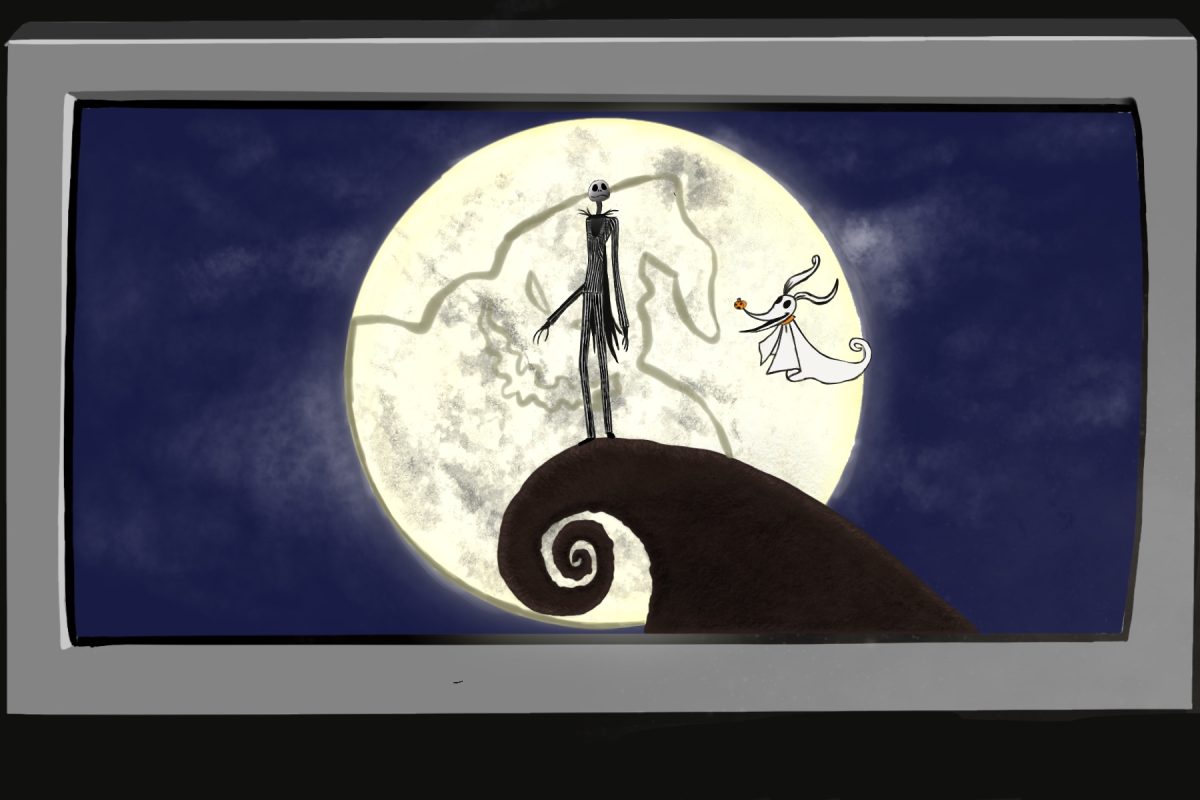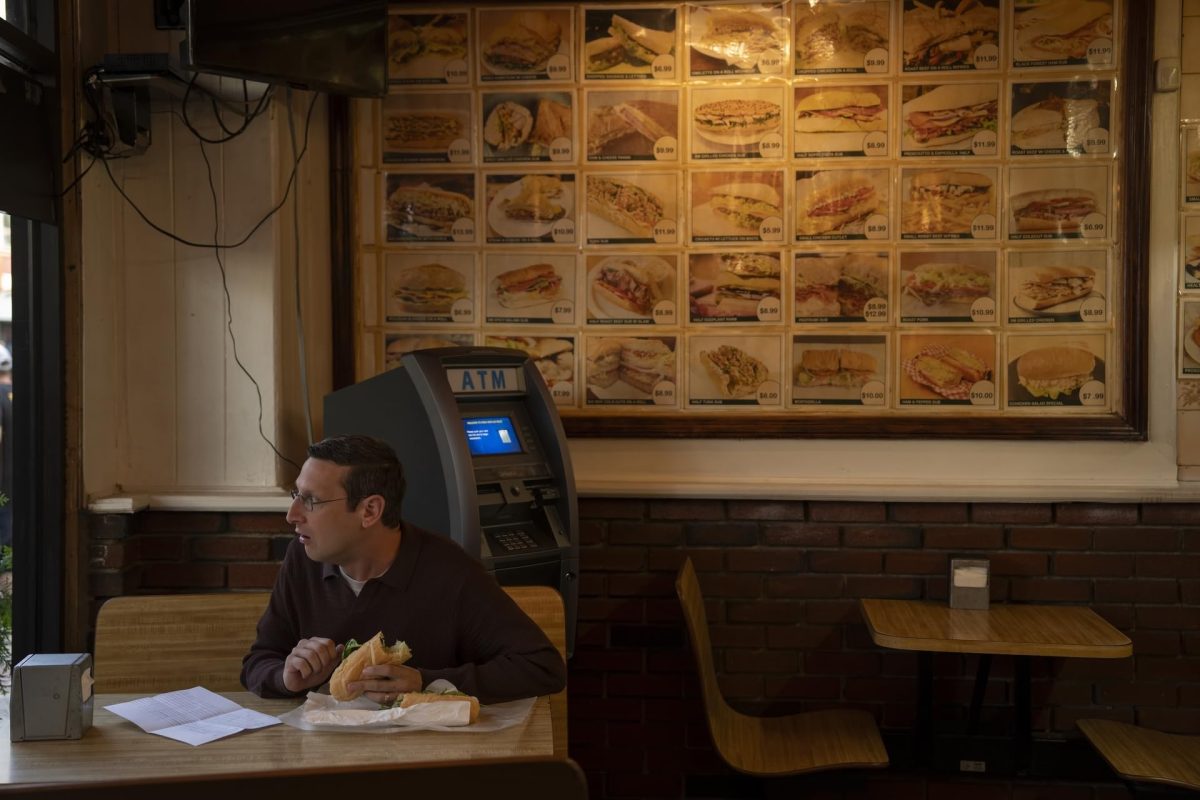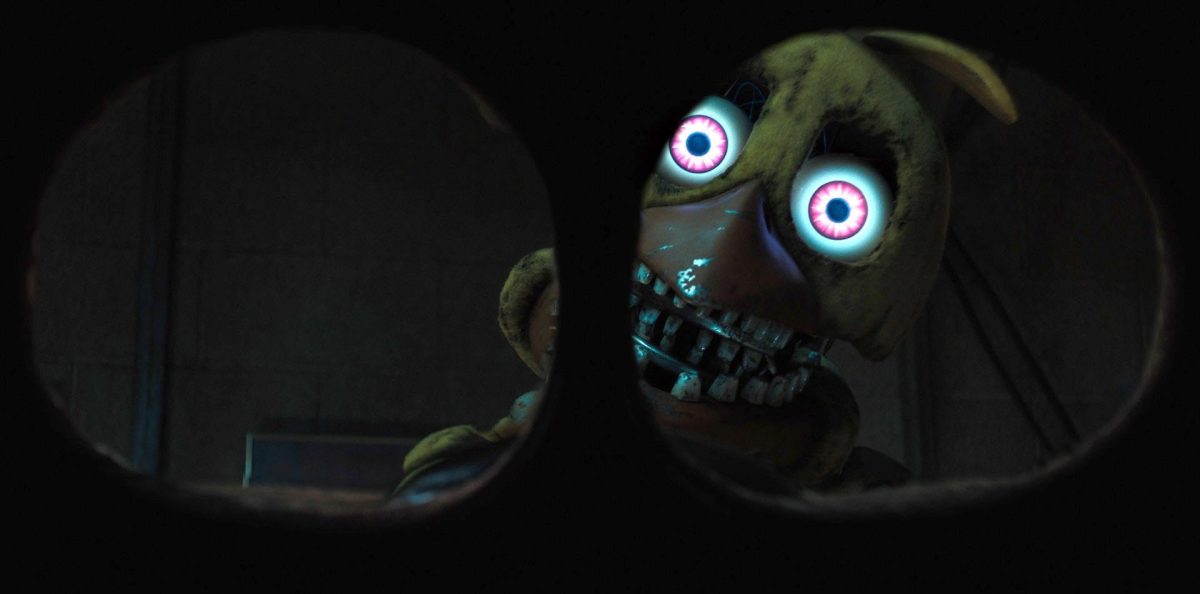**This review contains spoilers.**
This October marks the 30th anniversary of one of the most well-loved classic Halloween movies, “The Nightmare Before Christmas,” from producer Tim Burton and director Henry Selick. The film still holds an essential nostalgia to audiences today and has been re-released in theaters for the commemoration.
Set in Halloween Town, home to shadows, ghosts and other creatures of the night, Jack Skellington is the Pumpkin King. Jack grows weary of his famed role as a frightening figure and yearns for something more until he stumbles upon Christmas Town.
Jack decides to take Christmas into his own hands this year, having Santa Claus kidnapped by the Trick-or-Treaters, the Oogie Boogie Man’s henchmen. Sally, an intelligent Frankenstein’s monster and Jack’s love interest, can see that his holiday takeover will soon wreak havoc. She tries to warn him but ultimately fails.
Get The Daily Illini in your inbox!
From the get-go, it is clear that this film is most likely cherished because of its visually enrapturing world. Entering Halloween Town, the audience is met with a strict palette of black, white and orange, with every building angled peculiarly.
While the landscape embraces the odd and Gothic, the Claymation medium gives every shot a soft and welcoming finish. It allows creatures like munchkins with eyes sewn shut to sing to Jack without frightening younger audience members.
The soundtrack, written and composed by Oscar-nominated musician Danny Elfman, adds another charming aspect to the nostalgia of the film.
The plot is often driven by memorable songs like “This is Halloween,” which introduces viewers to Halloween Town, and “What’s This?,” which captures the curious wonder Jack feels when he finds Christmas Town.
Elfman mentions in an episode of Netflix’s “The Holiday Movies That Made Us” that he based the pressure Jack was feeling as the Pumpkin King on his own experiences as the lead singer of the new wave band Oingo Boingo. He said he felt such a connection to the character that he eventually wanted to sing Jack Skellington’s part in the finished film.
“Jack was an extension of what I was feeling at the time,” Elfman said in the series. “A lead singer in a band is like a king of their own little world but I was at the point where I didn’t wanna be in a band anymore.”
“Sally’s Song” is a standout track in the film, moving the audience with the eerie melody and kindhearted quality of actress Catherine O’Hara’s soprano voice. The lyrics show Sally’s bashful nature and her disappointment in herself for her inability to stop Jack from ruining Christmas.
“The worst is just around the bend/ And does he notice my feelings for him?” she sings. “And will he see how much he means to me?/ I think it’s not to be.”
During the exposition of the film, we see Sally constantly trying to poison her abusive creator, Dr. Finkelstein.
In one scene, she prepares a soup laced with deadly nightshade for Dr. Finkelstein, but he is apprehensive to try it due to her past attempts and forces her to take a sip. Sally, cunning and prepared, drops the spoon and bends to retrieve a different secret spoon, bored with holes, that is hidden inside her sock. Later, we find Dr. Finkelstein asleep.
While Sally is integral to the film, the audience still yearns for more time with her to understand her and her connection to Jack. As the film progresses, we learn the only thing that connects the two is their ambition for something more than their current situations. Most of the scenes they share before Jack’s Christmas expedition are of Sally following him in secret due to her shy personality.
The film paints a sinister but inviting world full of child-like wonder with its medium, setting and character design. Although further developing the emotional connection between Sally and Jack could enhance the story, this artistry gives the film the natural charisma essential to a nostalgic holiday classic.






